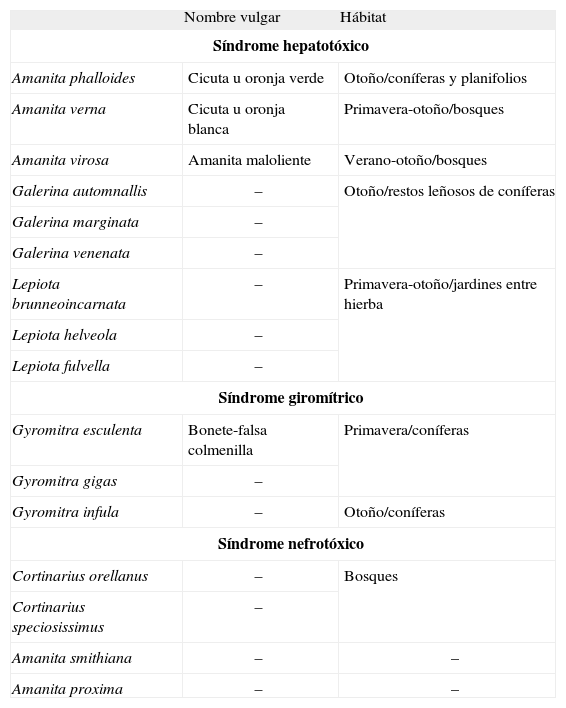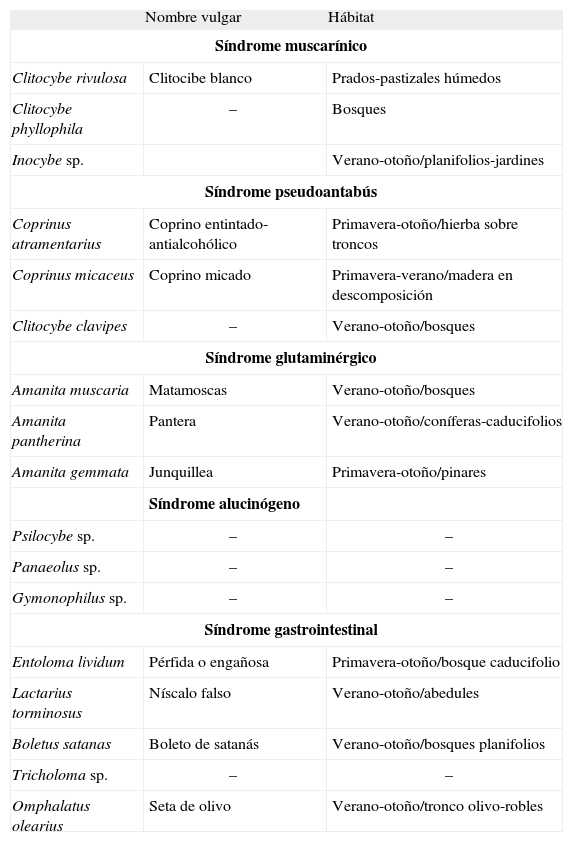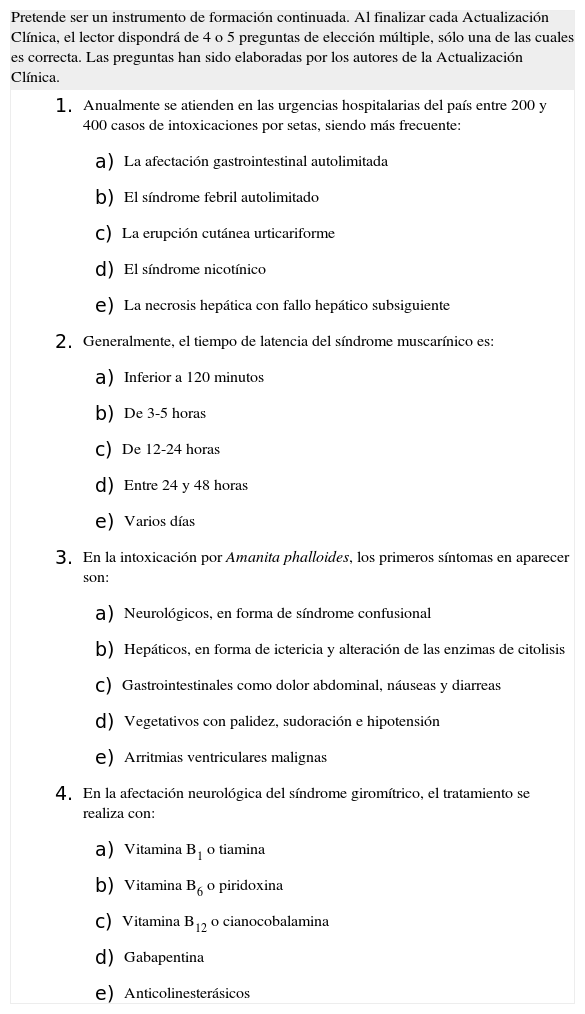La recolección y consumo de setas silvestres por sujetos sin conocimientos micológicos, y la ingesta accidental en niños son responsables de un número creciente de intoxicaciones. Es raro que la atención urgente a un intoxicado por hongos se efectúe en base a la confirmación de la especie o al aporte del ejemplar, por lo que resulta crucial conocer los síndromes tóxicos. La mayoría de estos cuadros son leves. La mortalidad se relaciona habitualmente con el desarrollo de necrosis hepática potencialmente mortal tras consumir Amanita phalloides u otras especies que contienen amatoxinas. No existe un tratamiento con evidencia científica y éste se fundamenta en medidas de soporte. A propósito de este caso se analizan las claves para llegar a un diagnóstico sindrómico basándose en el período de latencia y se describen los cuadros más representativos, así como la actitud terapéutica. Además se exponen otros hongos que pueden producir manifestaciones clínicas peculiares y excepcionales.
The collection and consumption of wild mushrooms by individuals with no mycological knowledge and their accidental ingestion by minors are responsible for a growing increase of poisonings. It is not usual for emergency care of a patient affected by mushroom poisoning to be based on recognition of the responsible species of fungus or access to a sample of the mushroom consumed. It is this reason knowledge of toxidromes is crucial. In the majority of cases, the symptoms are weak. Mortality is usually related to the development of potentially fatal liver necrosis after consumption of the fungus Amanita phalloides and others which contain amatoxins. Treatment is based on support measures but no specific treatments exist that are based on scientifically proven studies. In the following article the clues used in diagnosing which make it possible to carry out a syndromic diagnosis based on a period of latency will be analyzed. The mushrooms that are responsible for the most common syndromes, therapeutic options, as well as varieties of toxic fungus which may produce peculiar and exceptional symptoms are also reported.
Article
Diríjase desde aquí a la web de la >>>FESEMI<<< e inicie sesión mediante el formulario que se encuentra en la barra superior, pulsando sobre el candado.

Una vez autentificado, en la misma web de FESEMI, en el menú superior, elija la opción deseada.

>>>FESEMI<<<










